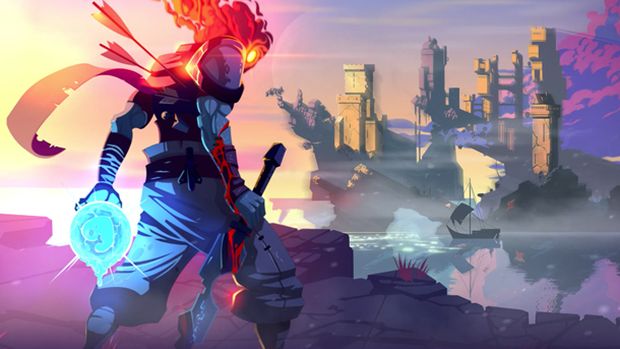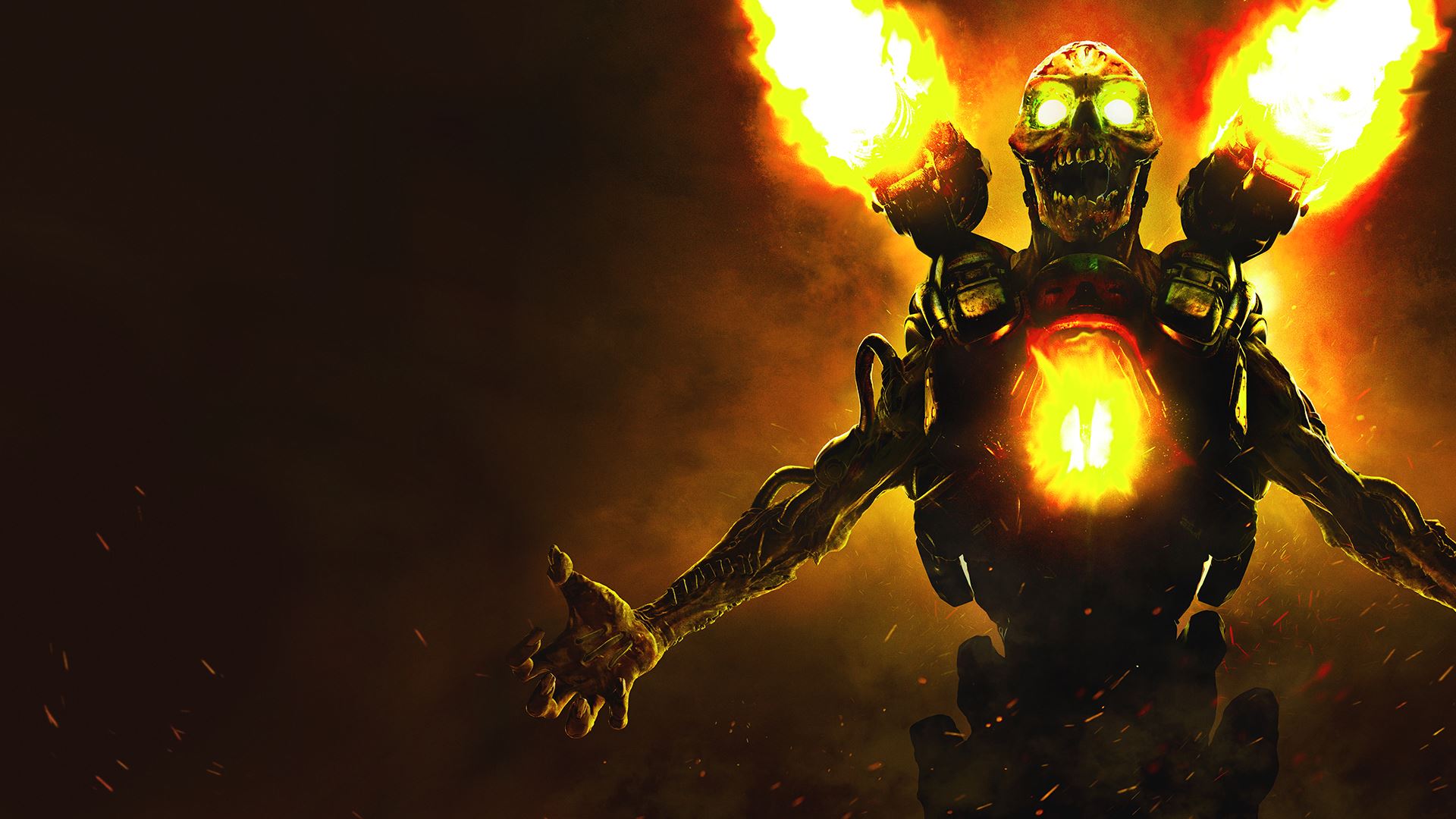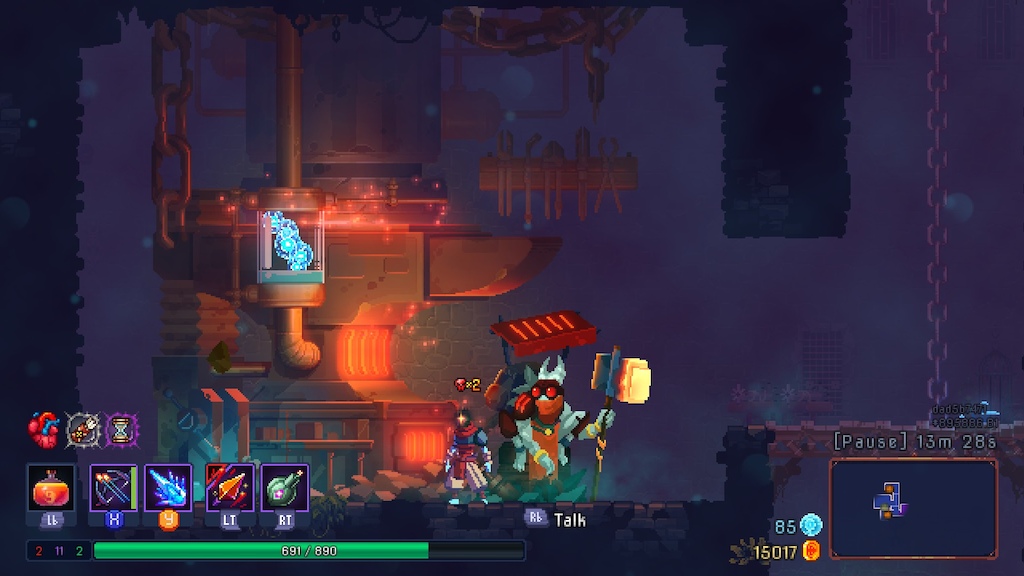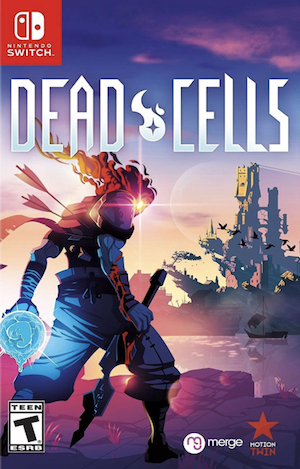
When I first received Dead Cells in May 2017, I didn’t really know what I was getting into. My only experience with a rogue-like Metroidvania title was Sundered but Motion Twin’s gorgeous art-style stuck out here. At this point, Dead Cells was still in Steam Early Access and still needed a number of quality of life features. Sure, I quit cold turkey after the floating eye boss (who’s simply known as Conjuctivius now) but that was due to having the perfect set-up and dying with the boss at a sliver of health. Otherwise, the struggle to get to that point was real as I persevered in run after run.
Stints with the game were infrequent – if a major update was announced, I’d return and see what it offered, whether it was new weapons, a new boss or the structure being further refined. Even the much-maligned UI update that made everything look “HD” brought me back.
"It’s a great game because it nails almost every single thing that makes killing stuff in games so much fun."
However, from the very beginning, the gameplay of Dead Cells always stood out. That loop of killing, gathering Cells, spending them on long-standing upgrades, trying to survive the next few segments, dying and repeating it all was just so addictive. Try as it might, even with the game’s cruelty, I was never permanently put off from the experience. But what was it about the game that just made killing feel so beautiful and good?
It could be chalked up to the art-style. Gwenaël Massé, an artist at Motion Twin, recently wrote on Gamasutra about the thought process behind the visual style. The emphasis was always on saturated colours with a defined Celtic architecture and alchemy as an overarching theme. Along with keeping players alert to things happening on screen, reinforcing the fast-paced nature of the gameplay, the art-style made for some truly interesting contrasts between the foreground and background. The level of detail in the environments was noticeable but the players’ focus was easily returned to the hazards in front of them.
The entire article is worth a read, specifically when discussing the game’s mood and consistency of art elements. Most importantly, the pixel art isn’t just there to help you admire the setting – it offers a lot of feedback on enemies while glorifying its own violence via extravagant particle effects. Look no further than the battles with Elites where particles are thick and flying, culminating in an epic explosion upon their deaths. Then there’s your own death which happens in slow motion as Cells go flying and you return to nothingness.
In my opinion, Dead Cells isn’t just a great game because it leverages its art style for every aspect of the game (which many great games do, let’s be honest). It’s not a great game because it takes many fundamentals of the Souls-like formula and translates them very well into a procedurally generated rogue-like experience. It’s a great game because it nails almost every single thing that makes killing stuff in games so much fun.
"Gameplay-wise, however, Dead Cells embodies many of the reasons that players go back to Dark Souls."
As crude as that sounds, let me explain. When playing for the first time, there’s a feeling of doubt. You don’t know what these enemies do. When they hit, they hit pretty hard. Which weapons are good? Which stats should you prioritize? What does each environment bring to the table in terms of challenges? Where should you be spending Gold and Cells? How do you defeat certain bosses? Dead Cells presents a whole lot of questions but it’s not trying to smack your hand away for the sake of difficulty. Instead, it wants you to discover your own tricks and trades, understanding the enemies and your own weapons en route to the last boss. Structurally, Dead Cells pays homage to retro titles like Ninja Gaiden.
However, it doesn’t stray too far from the approach that Dark Souls takes. Lore is sporadic and peppered gingerly through levels. You’re meant to understand the calamity that’s befallen this land with prisoner’s notes, the letters of dead families, journals for experiments and so on. You’re also meant to travel off the beaten path and explore, uncovering secrets and new abilities along the way, like when forgoing the Promenade of the Condemned for the Toxic Sewer to locate the Spider Rune.
Gameplay-wise, however, Dead Cells embodies many of the reasons that players go back to Dark Souls. Immersing yourself in the world is one thing but once you feel part of a place, comfortable with its goings-ons and patterns, what do you do next? Why, experiment and mess around. There’s a reason that Dark Souls fans do fresh playthroughs, even non-New Game Plus runs when they’ve seen everything on offer. It’s to try out new builds against bosses and enemies they’ve come to understand innately. Each Dark Souls playthrough can offer something different with the combat, aesthetics and world-building serving as an anchor for players to cling to.
Dead Cells‘ build options don’t give lots of room for choice just by the very nature of the game. Weapons and equipment are doled out randomly and even the starting weapons are random. Options are fairly limited in shops but if you’re thorough enough, you can find enough scrolls to raise your core stats to the right level. The combat, enemies and bosses don’t change – what’s changing are the tools used to approach them.
"In essence, the combat of Dead Cells then becomes something akin to DOOM (2016). Both games offer satisfying visual feedback for every kill."
And in this way, Dead Cells offers a microcosm of the Dark Souls replay experience. Even if you complete a run with less than ideal equipment, it still takes roughly an hour if you’re good. If you failed, then you immediately start over with enough Gold to get back into the fray. Though Dark Souls doesn’t punish you by wiping all progress and it doesn’t have procedurally generated areas, the enemies, bosses and core combat essentials stay the same. Over time, as you appreciate the concepts that govern these essentials, each new run becomes a part of a larger whole. The permanent unlocks that steadily tip the scales ensure that.
Of course, it doesn’t hurt that the combat in Dead Cells is so darn satisfying, complete with dodge rolling, i-frames and parrying to negate damage and strike back at a stunned foe. However, while Dark Souls’ combat has these fundamentals and a bunch more, it’s still relatively slow and more methodical than Dead Cells.
In essence, the combat of Dead Cells then becomes something akin to DOOM (2016). Both games offer satisfying visual feedback for every kill. Both games encourage players to hop into the fray as much with a strategical sense of slaughter as rote brutality. While Dead Cells lacks Glory Kills, it does offer mechanics like stomping down on a group of enemies to instantly obliterate, if not grievously wound, them. Even with its parrying and defensive options, you’re constantly on the move. Killing enemies in rapid succession makes you faster; continue the slaughter to extend the effect. Couple that with some Mutations that offer increased damage with every enemy killed.
Though DOOM has a set amount of weapons, the feedback on each is incredible. Furthermore, they can be modified to behave in different ways and conform to different styles. The one thing they have in common is just how unique each one behaves and how awesome they feel to use. The Combat Shotgun is your standard enemy-mowing device but the Super Shotgun is for gunning down the bigger game. The Heavy Assault Rifle is relatively weaker than other weapons but makes up for it with the rate of fire and flexibility, turning into either a scoped weapon with additional headshot damage or micro-missiles that bring down a hailstorm of destruction.
"While Dead Cells is fit for those who want to slaughter everything, running through the opposition and putting their new-found builds to the test, it also benefits a more cunning kind of player."
Weapons in Dead Cells function as variants of core archetypes so the Swift Sword functions differently from the Balanced Blade. They also come imbued with perks, stats and benefits that can synchronize with other elements of your build. Nonetheless, you wouldn’t mistake the heft of a Broadsword for the sweeping Symmetrical Lance or the Wrenching Whip for Valmont’s Whip in Dead Cells any sooner than you’d think the Plasma Rifle is the same as the Heavy Assault Rifle in DOOM. And regardless of which weapon you use, the emphasis on speed and sheer brutality at a moment’s notice is always clear.
As a side-note, the speed-running aspect is another way to feed into one’s urge for brutality and efficiency. Certain sections are gated off, pushing players to reach them in the allotted time to attain blueprints, Cells and other worthwhile items. So while Dead Cells is fit for those who want to slaughter everything, running through the opposition and putting their new-found builds to the test, it also benefits a more cunning kind of player. If you know how to properly navigate levels and avoid enemies while finding the scrolls needed to increase your stats, you’re rewarded for the same. But if you kill everything that moves and explore around, you might find some worthwhile weapons and items. Decisions, decisions.
If that wasn’t enough, Dead Cells has one more system to keep its players hooked on the addictive killing – the loot-grinding aspect. If you’re new to rogue-likes, then essentially, you can earn permanent unlocks aka stuff that’s usable outside of a current run. In the case of this game, it means finding blueprints that can be turned over to the Collector and unlocking them at any time with Cells. New weapons, new items, different mutations for making future runs more interesting, you get the idea.
"Of course, on top of this, each item can also have a “+”, “++” or “S” quality. This is done through the Forge and costs Cells. The more Cells invested, the higher the chance that certain items can have one of the above qualities."
How can a game that relies on RNG to dole out weapons and equipment, never mind the affixes and perks they’ll carry, possibly appeal to loot-grinding? This is made possible thanks to a multitude of factors. Items have different levels so it’s possible to find a Balanced Blade III which offers more base damage than your current Balanced Blade I.
Weapons and gear also have scaling modifiers so depending on their colourization, the damage scales based on the level of a certain stat (so melee weapons like the Broadsword will deal more damage if you have more points in the Strength stat). Colourless items can be found that circumvent this, scaling with your highest stat, but Legendary items can drop from bosses (with smaller chances of dropping from Elites and normal foes). They have a chance to generate an additional perk on top of all the others, are Colourless and thus scale with your highest stat and can be re-rolled for cheap.
Of course, on top of this, each item can also have a “+”, “++” or “S” quality. This is done through the Forge and costs Cells. The more Cells invested, the higher the chance that certain items can have one of the above qualities. On top of providing additional gear levels, making them flat out better than quality-less weapons, they also provide +1 to a stat (with “S” quality providing +2 or +1 to two stats). As the game progresses, you can have it so that all items drop at “+” quality or have a 60 percent chance to drop at “++” quality. Not satisfied with a weapon’s current perks? Re-roll it with Gold, which gives New Game Plus players more incentive to keep grinding.
"For those who can get into it, the game offers a vibrancy of killing, reinforced by so many different feedback loops, that’s deceptively inviting and strongly ensnaring."
In this way, there is a multitude of approaches that can be taken to obtaining good loot. You can kill everything, increasing chances of better items dropping or at least obtaining Cells that can be deposited into the Forge. Or, you could move quickly, picking off targets when required and find time-gated rooms for a guaranteed bundle of Cells and blueprints to unlock new items and additional benefits at the Collector. You could find an incredible weapon and re-roll it as necessary at a Blacksmith (who, by the way, will upgrade it to a “+” quality at the risk of changing core perks).
There’s this meta-game of unlocks, gold-hoarding, Cell-spending, re-rolling, Mutation-juggling and so much more on top of the stellar weapon selection, incredible combat and feedback, world-building and lore, replay value and aesthetic. I could go on about the risk/reward of the procedurally generated rooms as well and how they feed into every other aspect of design to further reinforce one’s urge for violence but that’s a top for another day.
Dead Cells may not be for everyone. It may not be for all hack and slash enthusiasts, Metroidvania fans, rogue-like fans or even action RPG/loot grinding fans. But for those who can get into it, the game offers a vibrancy of killing, reinforced by so many different feedback loops, that’s deceptively inviting and strongly ensnaring.
Note: The views expressed in this article are those of the author and do not necessarily represent the views of, and should not be attributed to, GamingBolt as an organization.




















